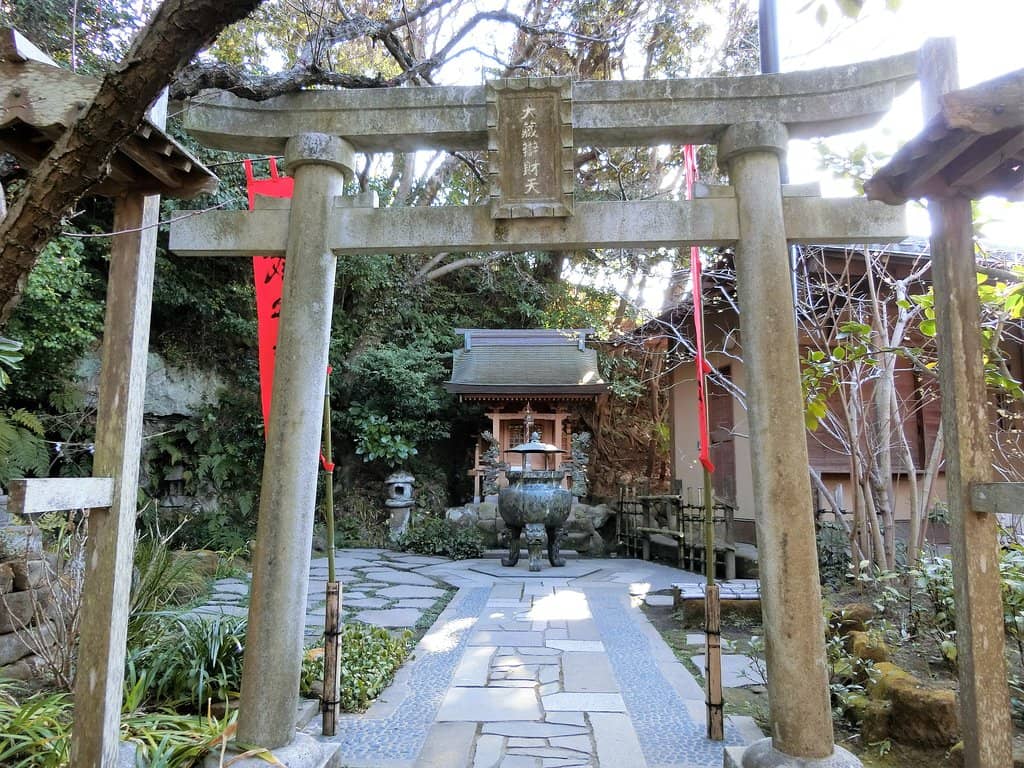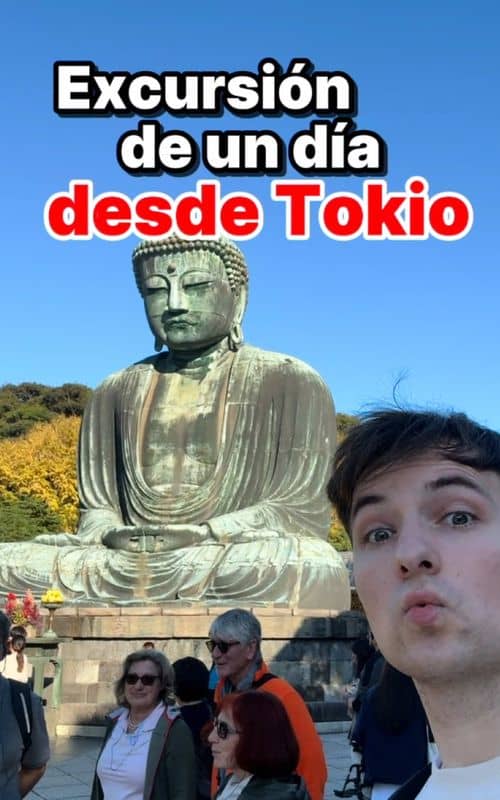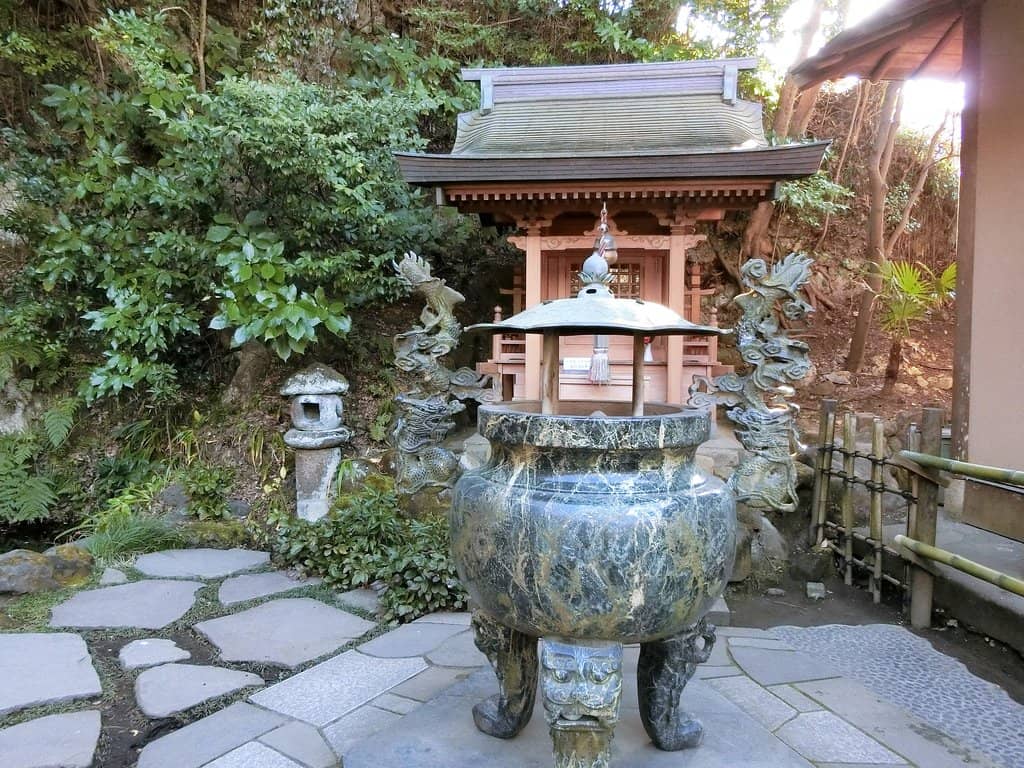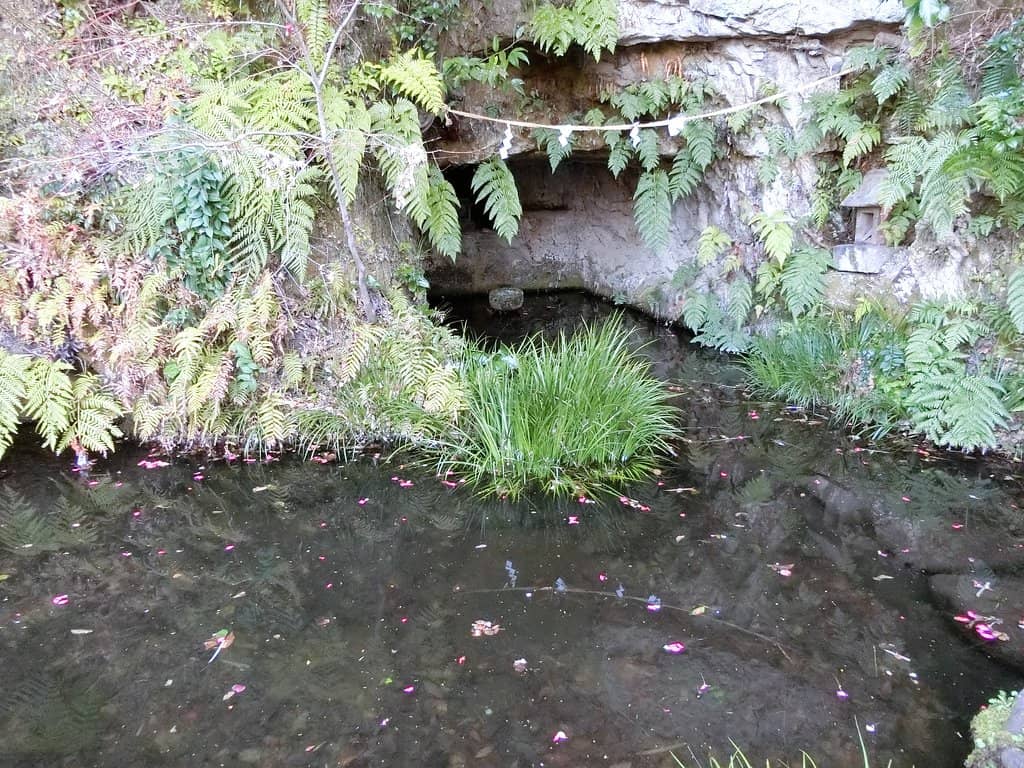
Sugimoto-dera Kamakura
Kamakura's oldest Buddhist temple, offering a serene escape with moss-covered stairs and a peaceful, historic atmosphere.

Highlights
Must-see attractions

Social
From TikTok & Reddit
Best Time
Peaceful and quiet atmosphere

Sugimoto-dera Kamakura
Best Time
Peaceful and quiet atmosphere

Highlights
Must-see attractions
Kamakura's oldest Buddhist temple, offering a serene escape with moss-covered stairs and a peaceful, historic atmosphere.
"This is one of the most beautiful temples I have visited in Japan. It’s so quiet, and there are cushions so you can meditate inside."

👟 Comfortable Footwear Needed
The moss-covered stairs can be slippery; wear shoes with good grip. :athletic_shoe:
🤫 Respect the Quiet
This is a place for meditation and reflection. Keep noise levels down. :personinlotus_position:

Highlights
Discover the most iconic attractions and experiences
Moss-Covered Stairs
Temple Entrance
Ascend the iconic, ancient stairs, softened by a carpet of lush green moss, leading to the main hall.
Thatched-Roof Temple Hall
Main Hall
Experience the serene atmosphere inside the small, historic temple, a perfect spot for quiet contemplation.
Hidden Lookout Point
Off the main path
Discover a peaceful vantage point offering serene views, a true hidden gem away from the main temple area.
Plans like a pro.
Thinks like you
Planning Your Visit
Embrace the Serenity
Navigating Kamakura's Gems
Best Times
Insider Tips
from TikTok, Instagram & Reddit
👟 Comfortable Footwear Needed
The moss-covered stairs can be slippery; wear shoes with good grip. :athletic_shoe:
🤫 Respect the Quiet
This is a place for meditation and reflection. Keep noise levels down. :personinlotus_position:
Best temples in Kamakura
📸 Photography Restrictions
Photography inside the temple is often not allowed, but the surroundings are beautiful. :camerawithflash:
💰 Affordable Entry
Admission is very inexpensive, making it a great value visit. :moneywithwings:
Tips
from all over the internet
👟 Comfortable Footwear Needed
The moss-covered stairs can be slippery; wear shoes with good grip. :athletic_shoe:
🤫 Respect the Quiet
This is a place for meditation and reflection. Keep noise levels down. :personinlotus_position:
📸 Photography Restrictions
Photography inside the temple is often not allowed, but the surroundings are beautiful. :camerawithflash:
💰 Affordable Entry
Admission is very inexpensive, making it a great value visit. :moneywithwings:
🕷️ Beware of Spiders
Some visitors mention large spiders; be prepared if you have a phobia. :spider:
What Travellers Say
Reviews Summary
Visitors praise Sugimoto-dera for its profound sense of peace, historical significance as Kamakura's oldest temple, and the beautiful moss-covered stairs. Many appreciate the opportunity for quiet meditation within the intimate temple hall. Some note that renovations can obscure views, and a few mention encountering spiders.
"I was fortunate to stop by Sugimoto-dera Temple while passing through Kamakura, and it turned out to be a truly beautiful place. The temple grounds have a quiet charm, with colorful flags fluttering and a serene atmosphere that feels steeped in history.
When I visited, however, the main gate was under renovation and covered with scaffolding, so part of the view was hidden. Even so, the visit was memorable, and the temple’s setting still left a lasting impression."
Hải Trần Trung
"SO beautiful, and way worth the walk. I came during golden week so there was a bit of people here, but can tell it’s pretty quiet normally. I was able to meditate for a small minute inside which was nice for a temple in Japan."
ann
"This is one of the most beautiful temples I have visited in Japan. It’s so quiet, and there are cushions so you can meditate inside the temple itself. I was able to meditate and not be bothered by hoardes of tourists. It was beautiful and peaceful. Off the main path there is a lookout. It is such a hidden gem and I am so happy I stumbled upon it randomly after Houkokuji!"
Hannah Robertson
What People Like
What People Dislike
Frequently Asked Questions
🚇 🗺️ Getting There
Sugimoto-dera is accessible by bus from Kamakura Station. Take a bus towards Enoshima or Kotsubo and get off at the 'Nishikicho' stop. From there, it's a short walk. It's also often visited as part of a walking tour of Kamakura's temples, potentially after Houkokuji Bamboo Garden.
Yes, it's often included in walking routes. Many visitors combine it with Houkokuji Temple and head towards Tsurugaoka Hachimangu Shrine.
Buses are convenient for longer distances, but many temples are also reachable by walking, especially if you plan a route. Consider a Kamakura day trip itinerary that links them.
Information on dedicated parking is scarce. It's generally recommended to use public transport or park at Kamakura Station and explore on foot or by bus.
Taxis are available from Kamakura Station, offering a direct but potentially more expensive route to the temple. This can be a good option if you're short on time.
🎫 🎫 Tickets & Entry
The admission fee is very affordable, often described as 'pocket money,' making it an accessible attraction for all travelers.
While specific hours can vary, temples in Japan typically open in the morning and close in the late afternoon. It's best to check for the most current times before your visit.
No advance booking is usually required for Sugimoto-dera. Tickets are typically purchased upon arrival at the temple.
Yes, the temple is relatively small, making it ideal for a brief stop or as part of a larger Kamakura temple tour.
Given the low admission price, discounts are not commonly advertised. The low cost is a significant plus for visitors.
🎫 🧭 Onsite Experience
The temple is renowned for its ancient, moss-covered stairs leading to a historic thatched-roof main hall, offering a serene and spiritual atmosphere.
Yes, visitors have mentioned being able to meditate inside the temple hall, enjoying a peaceful experience away from crowds.
It can get busy during peak times like Golden Week, but many visitors find it to be quiet and peaceful, especially outside of major holidays.
Restroom facilities are generally available at Japanese temples, though they might be basic. It's always good to use facilities when you see them.
Comfortable walking shoes are essential due to the stairs. Modest attire is recommended out of respect for the religious site.
📸 📸 Photography
Photography inside the main temple hall is typically prohibited to preserve the sacred atmosphere. However, the exterior and grounds offer beautiful photo opportunities.
The moss-covered stairs leading up to the temple are a highlight. The temple's exterior, the surrounding greenery, and any lookout points offer great shots.
While it might be more crowded, you can still capture beautiful images by being patient or visiting during less busy times. Early mornings are ideal.
Beyond the interior, general rules about respecting the site apply. Avoid intrusive photography and be mindful of other visitors.
A standard lens is usually sufficient. If you enjoy nature photography, a wide-angle lens can capture the mossy stairs and surrounding landscape effectively.
For Different Travelers
Tailored advice for your travel style
👨👩👧 Families with Kids
Keep the visit brief and focus on the quiet atmosphere. The temple's small size means it won't tire out younger children. It's a good opportunity to introduce them to the concept of ancient temples and the importance of quiet respect in religious sites. Be mindful of any spider sightings, which might concern some children.
🚶♀️ Solo Travelers & Peace Seekers
Combine your visit with a walk through the surrounding area, perhaps after exploring the nearby Houkokuji Bamboo Garden. The temple's intimate scale and affordable entry make it an easy and rewarding addition to any solo itinerary. Don't miss the chance to find the hidden lookout point for a moment of solitude.
💰 Budget Travelers
This temple offers significant historical and spiritual value without a hefty price tag. It's easily incorporated into a day trip using public transport, further keeping costs down. The peaceful atmosphere and ancient charm provide a rich experience that far outweighs the minimal cost.
Deep Dives
In-depth insights and expert knowledge
The Ancient History of Sugimoto-dera
The temple's architecture, particularly the thatched-roof main hall, reflects a simpler, more ancient style compared to some of Kamakura's grander temples. This contributes to its intimate and authentic feel. Visitors often remark on the 'old feeling' of the place, appreciating that it hasn't been overly modernized or 'stream-lined.'
Despite its age, the temple has faced challenges, including renovations. However, the enduring presence of its ancient structures and the serene atmosphere continue to draw visitors seeking a connection to Japan's past. The low admission fee makes this historical journey accessible to everyone.
Experiencing Tranquility: Meditation and Atmosphere
The moss-covered stairs leading up to the temple are not just a visual highlight but also contribute to the tranquil ambiance. The soft green carpet creates a sense of stepping into a sacred, natural space. The temple's setting, often described as beautiful and steeped in history, enhances this feeling of calm.
Even during busier periods like Golden Week, many visitors report finding moments of quiet reflection. The temple's intimate scale means that even with a moderate number of people, it doesn't feel overwhelmingly crowded. This makes it an ideal spot for those seeking a moment of peace and spiritual connection during their travels.




Social
from TikTok, Instagram & Reddit